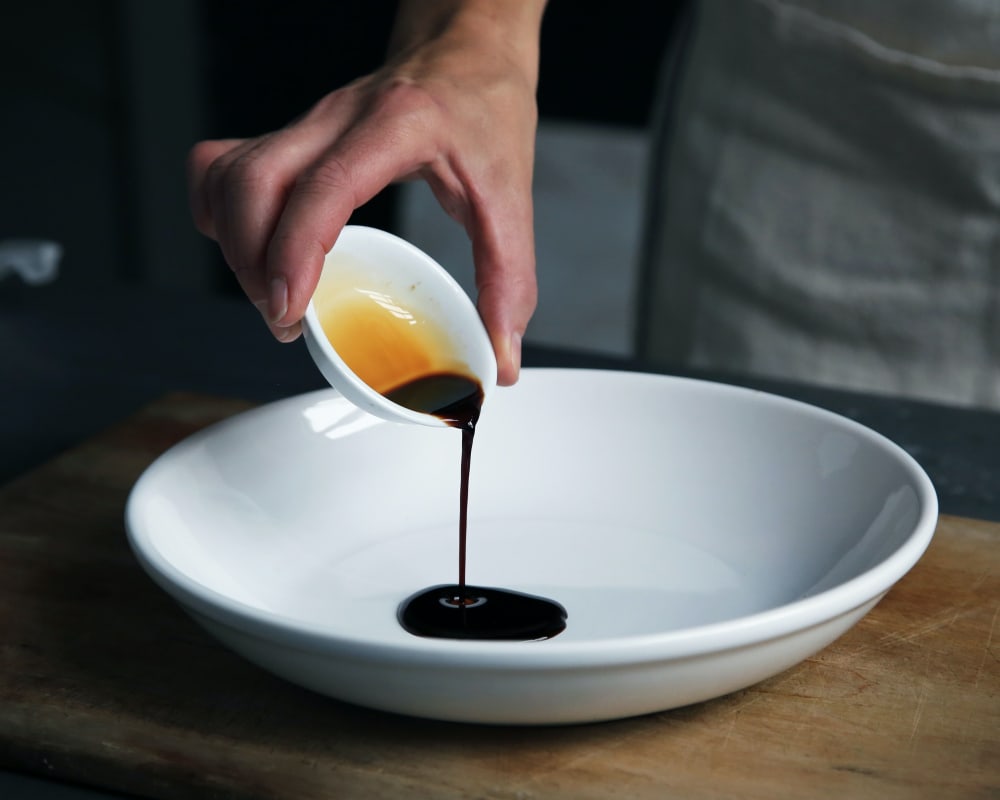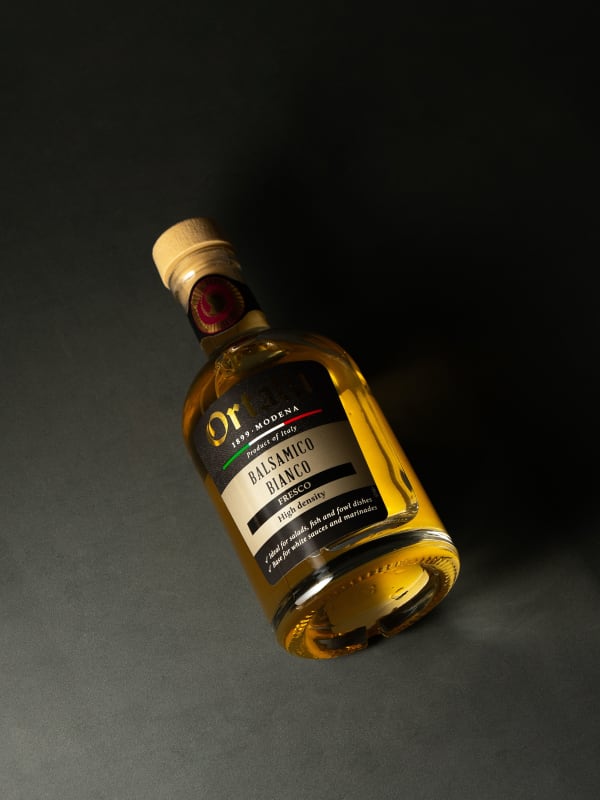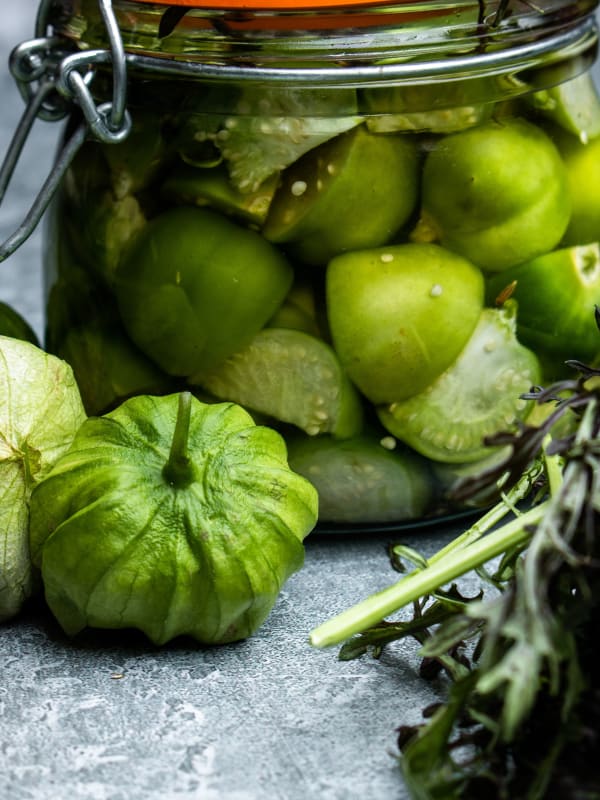Vinegar: A Culinary Treasure with Healthful Rewards

Vinegar: A Culinary Treasure with Healthful Rewards
From ancient origins to modern health revelations, explore the rich history and diverse benefits of this tangy liquid, elevating it beyond a simple salad dressing
Vinegar has been with us for a very long time. It generally flies under the radar as a humble sour liquid used in salad dressings. But underestimating it is a huge mistake! By rights, it should be recognized as a masterpiece of human ingenuity, a collaboration between multiple species, and an extremely sophisticated chemical cocktail.
Our taste buds recognize vinegar (no matter what kind) immediately by the sharp snap on our tongue. This trademark sharpness is the flavour of acetic acid, the one ingredient that must be present for vinegar to be vinegar.
Because acetic acid is present in all types of vinegar and has such a recognizable flavour, indeed a flavour that immediately arrests our attention, it provides the extremely diverse galaxy of different kinds of vinegar with a consistent calling card. One might even be tempted to think that vinegar is this tangy snap on the tongue. But as usual, the truth is endlessly more complex, and vinegar is so much more than any single type or flavour profile.
Like alcohol or any other fermentation, vinegar retains the essence of whatever it was made from, albeit transformed and elevated into totally different realms of chemistry and sensation.
Steeped in Time
In the 8th century, the Persian alchemist Jabir Ibn Hayyan discovered sulfuric acid. This was a revelation of profound significance because, until that point, organic acids like acetic were the most acidic around. In other words, vinegar was almost synonymous with acid for a very long time!
Archeologists have discovered traces of vinegar in Egyptian urns 8,000 years old. There is also clear evidence going back to 5,000 B.C. that the Babylonians adored it as a dressing and preservative. Vinegar consumption was ubiquitous in the Roman Empire, whose citizens enjoyed it in salad dressings and diluted as a tonic.
Aside from consuming it, it was also used topically as a disinfectant going back to at least 2,000 B.C. and right through cholera and plague pandemics and the Great War of the 20th century. The same bactericidal properties make it a great preservative, and vinegar has been used to pickle veggies for long shelf life all over the world since long before refrigeration.
But vinegar carries a special association with France, which distinguished its national offerings by carefully protecting proprietary production techniques as early as the 14th century. Fine distinctive French vinegars were also known by the wine they were made from. The world’s first vinegars most likely came from failed attempts to produce good spirits. Hence regional alcohols and regional vinegars often share a common source material: wine vinegar in France and Italy, malt vinegar in the U.S. and U.K., and rice vinegar in Japan. To this day France, Italy, and Spain are still primary global exporters of some of the world’s favourite craft vinegars. But it is to France alone that we owe the word “vinegar,” from vin aigre or ‘sour wine.’

What is it?
We can think of vinegar as the end product of a double fermentation process. While it’s typically made from fruits and grains, it can be made from any substrate that contains sugar or starch.
The first fermentation step is accomplished by yeast, which reliably converts sugar into alcohol.
Next come the acetobacter bacteria which convert alcohol into acetic acid. Although, this step is not technically fermentation but rather oxidation, and indeed oxygen is a required presence for the bacteria to do their work. You can imagine that these acetobacter bacteria are as much a worrying sign for the winemaker as they are the best friend of the vinegar producer!
Industrial white vinegar production involves the circulation of air through the solution to speed up the acetification process. White vinegar may in a sense represent vinegar in its purest form, produced directly (and quickly) from refined ethanol.
A clear distinction can be made between industrially produced vinegar and traditional biological slow vinegar. When vinegar is aged with its starting material, it gradually accumulates refined, nuanced flavours. The barrels used to age fine vinegars contribute their characteristics to the final product as well. As a general rule of thumb, the better the source materials and the more skillfully aged, the finer and more complex the resulting vinegar.
The virtually endless options for fruits, grains (or even milks or honeys), different yeasts, aging techniques, and even different types of acetobacter bacteria, are responsible for a vast world of subtle flavours easily as diverse and refined as wine or coffee, with its own dedicated legions of connoisseurs.
Health Benefits
Over 100 different chemical compounds have been discovered in the mere aroma of wine vinegar. These and other components of the fermentation play into the full complexity of its final flavour. Far beyond the requisite acetic acid, slow-aged vinegars contain a wealth of amino acids, esters such as ethyl acetate, minerals, vitamins, organic acids (aside from acetic), and free-radical scavenging polyphenols. In a happy symmetry of health benefits and flavour profiles, these polyphenols are responsible both for protecting the cells in our body from oxidative stress, and for the limitless variations in flavour, aroma, and colour.
There seems to be a value hierarchy with fine slow-aged vinegars at the top and white vinegar at the bottom. But make no mistake! Even the humble white vinegar, sometimes denigrated as merely a cleaning product, has a lot to offer the human body.
All vinegars can:
- Lower the glycemic impact of a meal when paired with carbohydrates
- Reduce the activity of carb-splitting disaccharidase enzymes in the small intestine so fewer sugars are absorbed into circulation
- Improve glucose uptake in peripheral body tissues
- Delay gastric emptying time
- Improve pancreatic function and insulin secretion
- Increase satiety and promote weight loss
- Reduce insulin resistance in diabetics
- Boost calcium absorption
- Neutralize e.coli on raw veggies (think vinaigrette!)
- Lower serious predictive markers for cancer and heart disease
- Help regulate systolic blood pressure
- Reduce acid reflux
- Raise stomach acidity for improved digestion
Note that many of the above-listed effects relate to balancing blood sugar metabolism. Beyond diabetes, suboptimal insulin function is related to a wide range of degenerative pathologies affecting physical and mental health. Taking care of your metabolism before it’s an issue, if possible, will help you stay happy, sharp, and active into old age.
Some obligatory caveats:
- Taken straight, the acidity of vinegar can irritate the esophagus. Hence why the Romans would dilute it.
- The same low pH, courtesy of our friend acetic acid, can erode dental enamel in excess. Consider using a metal straw if you regularly enjoy shrubs or fire cider.
- Vinegar’s ability to extend the time that food stays in the stomach, which is partly how it improves blood sugar absorption and makes meals more satisfying, can also interfere with healthy digestion if taken too far.

Pickle Yourself Silly
Enjoyed in moderation, vinegar is absolutely deserving of its enshrined place in the world of natural foods and healthy lifestyles. As with most beneficial ancestral foods, our appreciation of vinegar can be enriched in at least three ways:
- We can consider the millennia of history, the enormity of geographical scale, and the sheer vastness of vinegar’s story in time and space. This endless, beginningless condiment was produced by happy self-motivated acetobacters long before there were humans to consume it. And those tiny busybodies will probably continue to make more of it long after humans are gone!
- We can consider the scientific progress of our brightest minds, who are still scratching the surface of vinegar’s complex interaction with human physiology and the many health benefits it has to offer. Just because it has been used for thousands of years does not mean that breaking research will fail to uncover the hitherto unknown effects of this strange brew. I promise you: we still have much to learn.
- We can enjoy the taste! The signature snap of acetic acid is, after all, a very unique brightness that adds an irreplaceable dimension to meals. Aside from the up-front tanginess, we can tune in to the subtler sensory fields of different balsamics, apple ciders, wine and rice vinegars, and endless other acetic amigos.
Adams, M. R. (2014). Vinegar. Encyclopedia of Food Microbiology, 717–721. https://doi.org/10.1016/b978-0-12-384730-0.00348-7
Encyclopedia.com. (2023, July 29). The Alchemy Of Mineral Acids. Encyclopedia.com. https://www.encyclopedia.com/science/encyclopedias-almanacs-transcripts-and-maps/alchemy-mineral-acids
Garcia-Parrilla, M. C., Torija, M. J., Mas, A., Cerezo, A. B., & Troncoso, A. M. (2017). Vinegars and Other Fermented Condiments. Fermented Foods in Health and Disease Prevention, 577–591. https://doi.org/10.1016/b978-0-12-802309-9.00025-x
Gomes, R. J., Borges, M. F., Rosa, M. F., Castro-Gómez, R. J. H., & Spinosa, W. A. (2018). Acetic Acid Bacteria in the Food Industry: Systematics, Characteristics and Applications. Food technology and biotechnology, 56(2), 139–151. https://doi.org/10.17113/ftb.56.02.18.5593
How Vinegar Is Made. How Products Are Made. (n.d.). http://www.madehow.com/Volume-7/Vinegar.html
Johnston, C. S. (2009). Medicinal Uses of Vinegar. Complementary and Alternative Therapies and the Aging Population, 433–443. https://doi.org/10.1016/b978-0-12-374228-5.00022-6
Johnston, C. S., & Gaas, C. A. (2006). Vinegar: medicinal uses and antiglycemic effect. MedGenMed : Medscape general medicine, 8(2), 61.
Kwon, D. Y., Nyakudya, E., & Jeong, Y. S. (2014). Fermentation: Food Products. Encyclopedia of Agriculture and Food Systems, 113–123. https://doi.org/10.1016/b978-0-444-52512-3.00155-8
Mas, A., Troncoso, A. M., García-Parrilla, M. C., & Torija, M. J. (2016). Vinegar. Encyclopedia of Food and Health, 418–423. https://doi.org/10.1016/b978-0-12-384947-2.00726-1
McGill. (n.d.). History of Sulfuric Acid. Sulfuric Acid. https://www.cs.mcgill.ca/~rwest/wikispeedia/wpcd/wp/s/Sulfuric_acid.htm#:~:text=History%20of%20sulfuric%20acid,century%20alchemist%20Jabir%20ibn%20Hayyan
Ponti. (2023, May 4). https://www.ponti.com/us/
Rao, T. (2018, February 5). Exploring the Sweet Subtleties of Vinegar. The New York Times. https://www.nytimes.com/2018/02/05/dining/vinegar-cooking-recipes.html
A Short History of Vinegar. Womersley Foods. (n.d.). https://womersleyfoods.com/pages/a-short-history-of-vinegar
Xia, T., Zhang, B., Duan, W., Zhang, J., & Wang, M. (2020). Nutrients and bioactive components from vinegar: A fermented and functional food. Journal of Functional Foods, 64, 103681. https://doi.org/10.1016/j.jff.2019.103681





